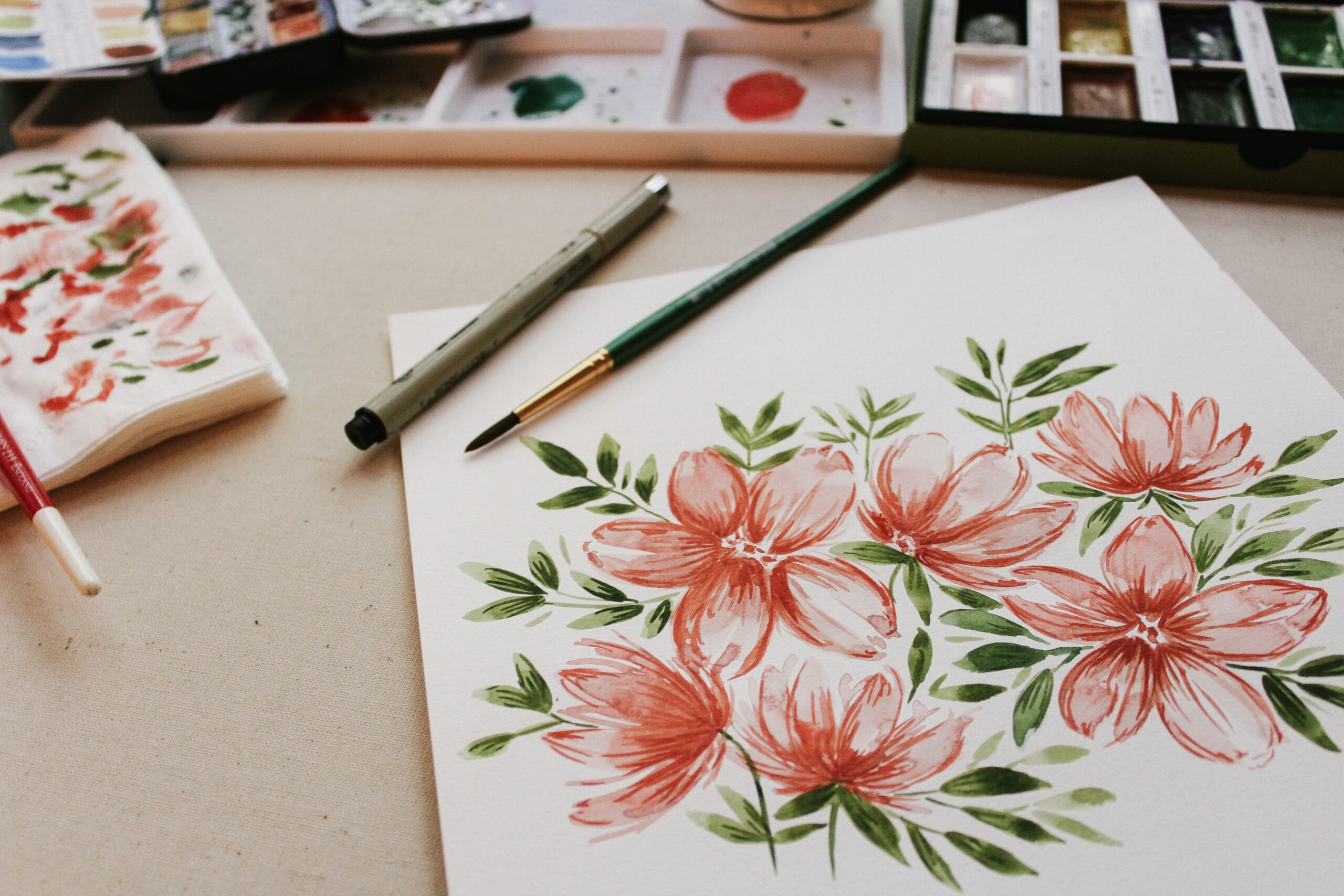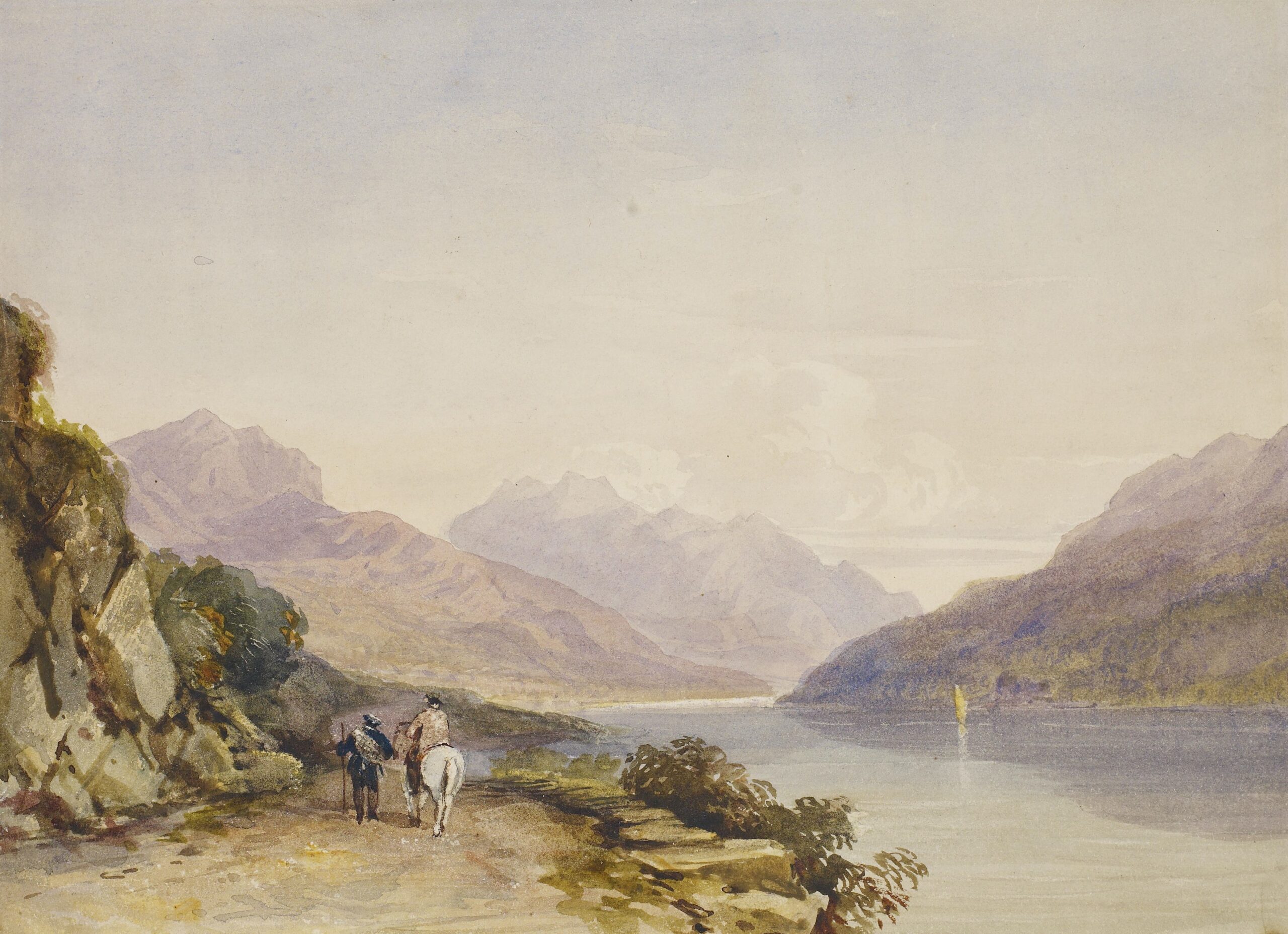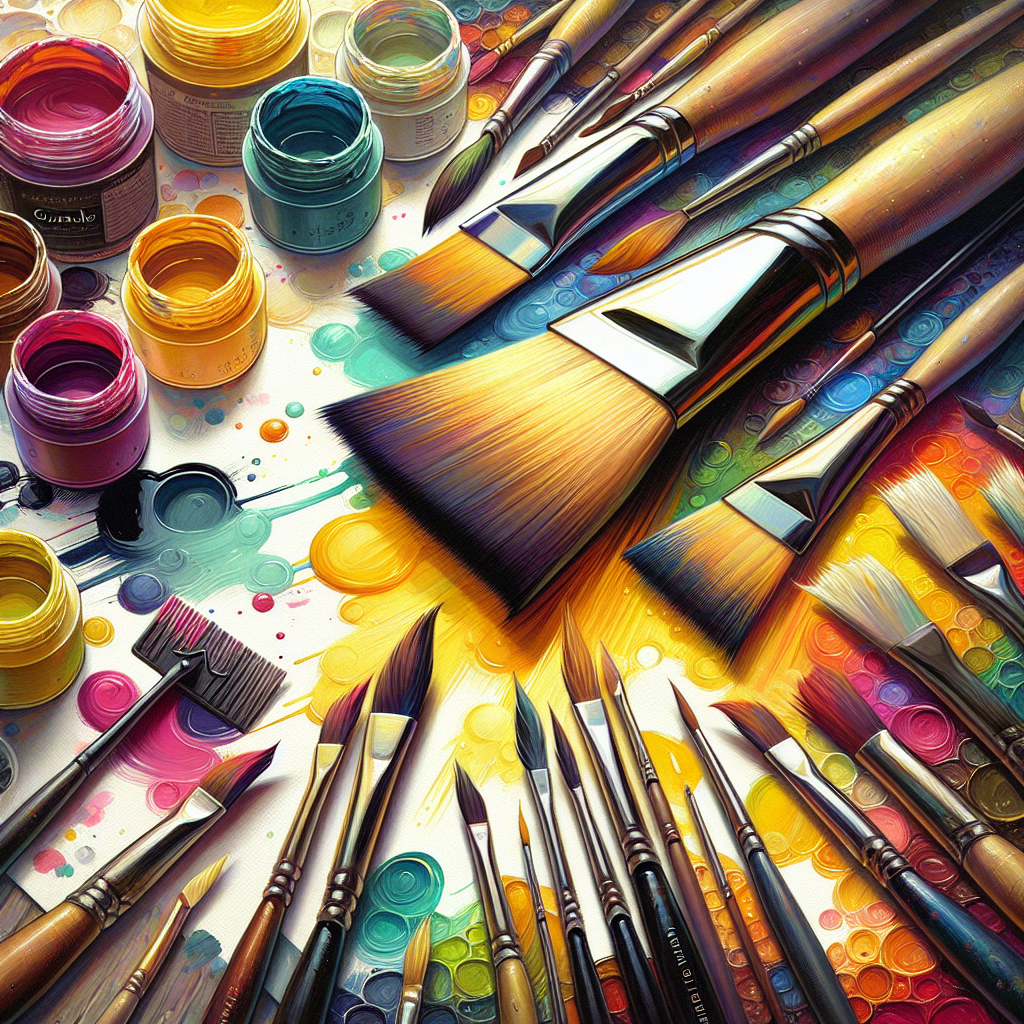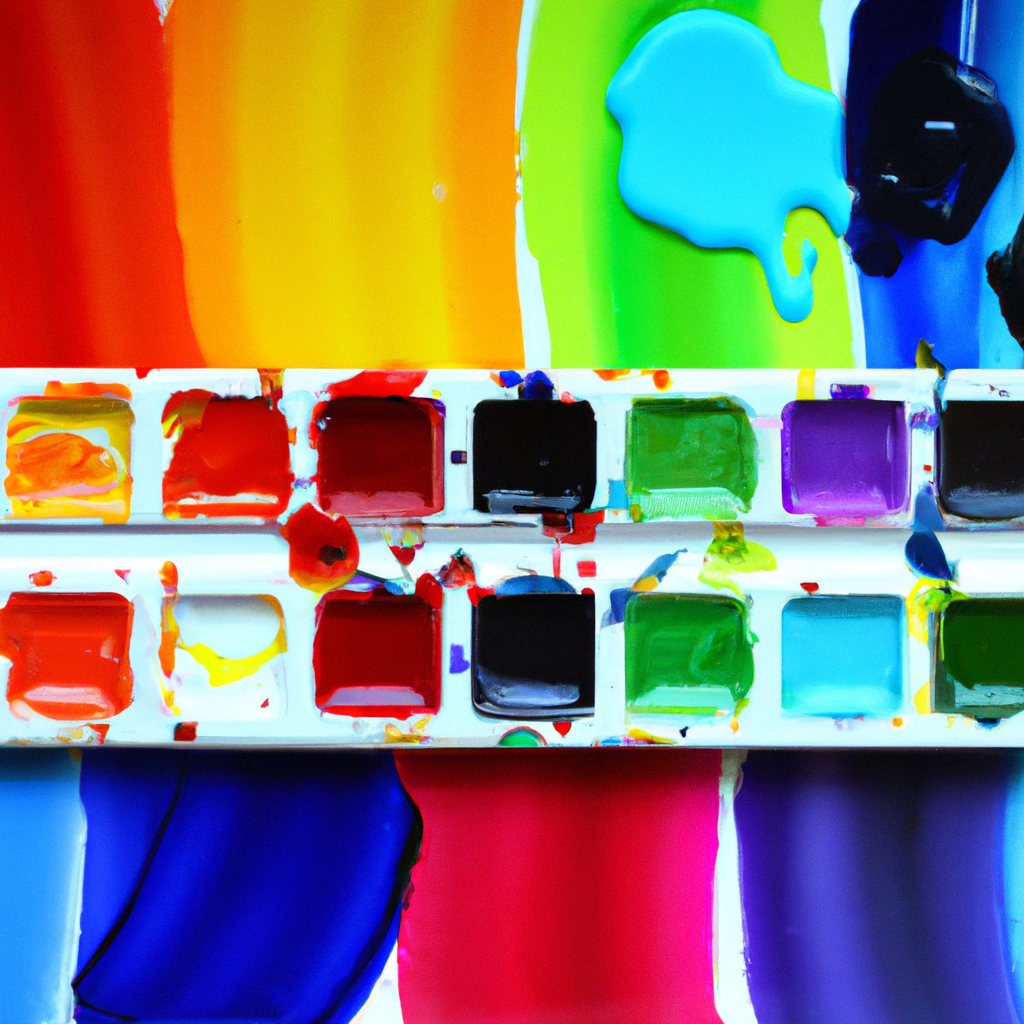Gouache paint, a versatile medium known for its vibrant colors and opaque finish, has often perplexed artists when it comes to its drying process. As an artist, you may find yourself wondering if gouache paint dries exactly as it is applied on the surface, maintaining its original texture and appearance. In this article, we will explore the unique properties of gouache paint and delve into the intricacies of its drying process, providing you with a deeper understanding of how this medium transforms from a wet application to a dried masterpiece.
What is Gouache Paint
Definition
Gouache paint is a type of water-based artist paint that is known for its opaque and vibrant colors. It is composed of pigment, binder, and water. Gouache paint has a creamy consistency and can be diluted with water to create transparent washes or applied in thick layers for more opaque effects. It is commonly used by artists and illustrators for its versatility and ability to create bold, vibrant artworks.
Composition
Gouache paint is made up of pigments, binders, and water. The pigments provide the color and are finely ground particles that are suspended in the paint. The binders, typically gum arabic or dextrin, act as the adhesive that holds the pigments together and allows them to adhere to the surface. Water is added to adjust the consistency and workability of the paint.
Unlike watercolor paint, which remains transparent when dry, gouache paint dries to a matte finish. This unique characteristic allows for layering and allows the artist to easily correct or modify their work. Gouache paint can be used on various surfaces such as paper, canvas, wood, and even glass.
How Does Gouache Paint Dry
The Composition of Gouache Paint
As mentioned earlier, gouache paint is composed of pigments, binders, and water. When applied to a surface, the water in the paint begins to evaporate, leaving behind the pigment and binder. The binder then hardens, creating a solid film of paint on the surface. It is this process of evaporation and the hardening of the binder that causes gouache paint to dry.
Drying Time
The drying time of gouache paint can vary depending on several factors, including the humidity and temperature of the environment, the thickness of the paint application, and the type of paper or surface used. Generally, gouache paint dries relatively quickly compared to oil paint, but it can still take several minutes to hours for a thin layer to dry completely.
Matte vs. Glossy Finish
Another important aspect of gouache paint drying is the finish it creates. Gouache paint typically dries to a matte finish, which means it has a flat, non-reflective surface. This matte finish gives gouache paintings a unique, velvety appearance and allows the colors to appear highly saturated. However, it is possible to achieve a glossy or shiny finish by applying a varnish or gloss medium over the dried gouache paint.

This image is property of images.unsplash.com.
Factors Affecting Drying Time
Humidity and Temperature
One of the key factors that can affect the drying time of gouache paint is the humidity and temperature of the environment. Higher levels of humidity can slow down the evaporation process, resulting in a longer drying time. On the other hand, low humidity and warmer temperatures can accelerate the drying process. It is important to consider these factors when working with gouache paint and adjust your working conditions accordingly.
Thickness of Application
The thickness of the gouache paint application can also impact the drying time. Thicker layers of paint will take longer to dry compared to thin, diluted washes. This is because the water in the paint needs to evaporate from each layer, and as the thickness increases, the evaporation process becomes slower. It is recommended to apply gouache paint in thin, even layers to ensure a quicker drying time and prevent issues such as cracking.
Type of Paper or Surface
The type of paper or surface used can also influence the drying time of gouache paint. Some papers are more absorbent and allow for quicker drying, while others may retain more moisture, resulting in a longer drying time. It is advisable to use papers specifically designed for gouache painting to ensure optimal drying conditions and prevent any unwanted effects.
Surface Dry vs. Dry to the Touch
Explanation
When discussing the dryness of gouache paint, it is important to differentiate between surface dryness and dryness to the touch. Surface dryness refers to when the paint film no longer appears wet or sticky to the eye, but it may still have moisture trapped within. Dryness to the touch, on the other hand, indicates that the paint film is fully dry and does not leave any residue on the fingers when touched.
Importance
Understanding the difference between surface dryness and dryness to the touch is crucial for artists working with gouache paint. Applying additional layers or touching the surface before the paint is fully dry can lead to smudging, blending of colors, or even lifting off the existing layers of paint. Therefore, it is important to wait until the paint is dry to the touch before proceeding with further work or handling the artwork.

This image is property of images.unsplash.com.
How to Speed Up the Drying Process
Thin Layers
One effective way to speed up the drying process of gouache paint is to apply thin layers. Thick layers of paint take longer to dry as the water content needs to evaporate from each layer. By using thin, diluted washes of gouache paint, you can achieve faster drying times and also create transparent effects and build up layers more easily.
Use a Hairdryer
Using a hairdryer on a low or cool setting can help accelerate the drying process of gouache paint. Hold the hairdryer a slight distance away from the artwork and move it gently and evenly across the surface. Be cautious not to overheat the paint, as excessive heat can cause the colors to fade or change.
Use a Fan
Placing a fan near your artwork can also aid in speeding up the drying process. The air circulation created by the fan helps to evaporate the moisture in the paint more quickly. Position the fan at a moderate distance from the artwork and adjust the speed and intensity of the airflow to suit your needs.
Blot Excess Moisture
If you find that your gouache paint is taking longer to dry due to excess moisture, you can accelerate the process by blotting the surface gently with a clean, dry cloth or paper towel. This helps to remove any excess water in the paint and encourages faster evaporation.
Choose Quick-Drying Brands
Not all gouache paints are created equal when it comes to drying time. Some brands offer quick-drying formulations that are specifically designed for artists who prefer a faster drying process. When purchasing gouache paint, look for labels or descriptions that indicate quick-drying properties.
Avoiding Common Drying Issues
Cracking
One common issue that artists may encounter with gouache paint drying is cracking. Cracking occurs when the paint film dries too quickly, causing it to shrink and pull away from the surface. To prevent cracking, it is important to apply gouache paint in thin layers, avoid overworking the paint, and ensure that the layers below are dry before applying additional paint.
Dulling or Muddying of Colors
Gouache paint can sometimes appear dull or muddy when it dries, particularly if the colors are mixed extensively or applied too thickly. To prevent this issue, it is recommended to use fresh, vibrant colors and mix them sparingly. Applying thin layers of paint and allowing each layer to dry thoroughly before adding more can also help maintain color vibrancy.
Uneven Drying
Uneven drying, where certain areas of the artwork dry faster than others, can lead to an uneven appearance and affect the overall quality of the painting. To avoid this issue, ensure that the paint is applied evenly and uniformly across the entire surface. Maintaining a consistent thickness of application and avoiding excessive reworking or blending can also help promote even drying.

This image is property of images.unsplash.com.
The Importance of Proper Drying
Preventing Smudging or Smearing
Proper drying of gouache paint is essential to prevent smudging or smearing of the artwork. Gouache paint can remain slightly reactivatable, even when dry to the touch. If additional layers or touch-ups are applied before the paint is fully dry, it can lead to unwanted blending, smudging, or lifting off of the existing layers. Allowing the paint to fully dry helps ensure that the artwork remains pristine and avoids any accidental damage.
Ensuring Longevity and Durability
Proper drying also contributes to the longevity and durability of gouache paintings. When the paint is fully dry, it forms a strong and solid film that adheres well to the surface. This helps protect the artwork from external factors such as moisture, dust, and physical damage. Ensuring that your gouache paintings are fully dry before storing or framing them can help preserve their quality for years to come.
Sealing and Protecting Gouache Paintings
Varnishing
Varnishing is a common technique used to seal and protect gouache paintings. Applying a layer of varnish over the dried paint can enhance the colors, increase the longevity, and provide a protective barrier against UV rays, moisture, and dust. It is important to choose a varnish specifically formulated for use with gouache paint and follow the manufacturer’s instructions for application.
Using Fixatives
Fixatives can also be used to seal and protect gouache paintings. Fixatives are aerosol sprays that create a thin, transparent layer over the artwork, securing the gouache pigments and preventing smudging or smearing. It is advisable to use fixatives sparingly and apply them in a well-ventilated area, following the manufacturer’s guidelines.
Framing
Framing gouache paintings under glass can provide additional protection and prevent dust, moisture, and physical damage. Ensure that the frame is fitted with a mat or spacer to prevent the glass from touching the surface of the painting. This helps to maintain the integrity of the artwork and allows for proper airflow.

Alternative Techniques for Drying Gouache Paint
Using Heat Guns
Heat guns are a tool that can be used to speed up the drying process of gouache paint. Similar to using a hairdryer, heat guns emit hot air that helps evaporate the moisture in the paint. However, heat guns generate higher temperatures and stronger airflow than hairdryers, so caution must be exercised to avoid overheating the paint or causing any damage to the artwork.
Using Oven Drying
Oven drying is another alternative technique that can be used to accelerate the drying time of gouache paint. It involves placing the artwork in a preheated oven at a low temperature for a short period. However, this method requires careful monitoring to prevent overheating or damage to the artwork. It is advisable to consult the instructions provided by the gouache paint manufacturer or seek professional advice before attempting oven drying.
Using Dehumidifiers
For artists working in high-humidity environments, using dehumidifiers can help create an optimal drying environment. Dehumidifiers remove excess moisture from the air, reducing the overall humidity and facilitating faster evaporation of water from the gouache paint. This can result in shorter drying times and help prevent issues such as mold or mildew growth.
Conclusion
Understanding how gouache paint dries is essential for artists who work with this versatile medium. The composition of gouache paint, the factors that affect drying time, and the techniques to speed up or control the drying process all contribute to creating successful gouache artworks. Additionally, taking proper care to seal, protect, and frame gouache paintings ensures their longevity and durability. By mastering the properties of gouache paint and applying proper drying techniques, artists can create vibrant and long-lasting artworks that showcase the unique qualities of this intriguing medium.




